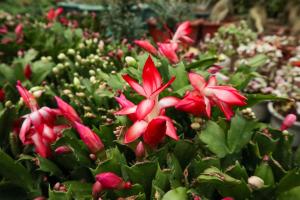How to Care for a String of Pearls Plant
The String of Pearls plant, also known as Senecio rowleyanus, is a unique succulent that is characterized by its long trailing stems adorned with round, bead-like leaves. This plant is easy to care for, making it a popular choice for both novice and experienced gardeners. In this article, we will discuss some helpful tips on how to care for a String of Pearls plant.
Light Requirements
The String of Pearls plant thrives in bright, indirect light. Direct sunlight can scorch the leaves and cause the plant to wither. Therefore, it is essential to place your plant in a spot that receives filtered or indirect light. South or west-facing windows are ideal for this plant. If you do not have access to such windows, you may use artificial grow lights to supplement the light.
Watering
One of the most crucial aspects of caring for a String of Pearls plant is watering. This plant requires infrequent watering, and overwatering can cause root rot. A good rule of thumb is to water your plant once every two weeks, but this will depend on various factors such as the temperature, humidity levels, and size of the pot. To ensure that you do not overwater your plant, allow the soil to dry out completely before watering.
Soil
The String of Pearls plant requires well-draining soil. It is recommended to use a cactus or succulent soil mix, which allows water to drain freely from the roots. You may also add perlite or sand to the soil mix to improve drainage. Avoid using regular potting soil, as it tends to hold water, which can lead to root rot.
Fertilizer
Fertilizing your String of Pearls plant is not necessary, but it can help promote growth and blooming. You may use a succulent or cactus fertilizer once a month during the growing season, which is spring and summer. However, avoid fertilizing during the winter when the plant is dormant.
Propagation
Propagating a String of Pearls plant is relatively easy. You may take stem cuttings and place them in well-draining soil. Keep the soil moist until the roots establish, and then reduce the watering frequency. Alternatively, you may propagate by division, separating the plant into smaller sections and planting them in separate containers.
Pests and Diseases
The String of Pearls plant is relatively resistant to pests and diseases. However, overwatering may lead to root rot, which can be challenging to treat. If you notice that the leaves are turning yellow or mushy, it may indicate root rot. In such cases, you may need to repot the plant in fresh soil and reduce the watering frequency. Additionally, avoid getting water on the leaves, as this can cause fungal diseases.
Conclusion
In conclusion, the String of Pearls plant is a unique and charming succulent that is easy to care for. To ensure that your plant thrives, place it in bright, indirect light, water it infrequently, and use well-draining soil. With a little bit of care and attention, your String of Pearls plant will reward you with beautiful trailing stems and tiny, bead-like leaves.

 how many times do yo...
how many times do yo... how many planted tre...
how many planted tre... how many pine trees ...
how many pine trees ... how many pecan trees...
how many pecan trees... how many plants comp...
how many plants comp... how many plants can ...
how many plants can ... how many plants and ...
how many plants and ... how many pepper plan...
how many pepper plan...






























